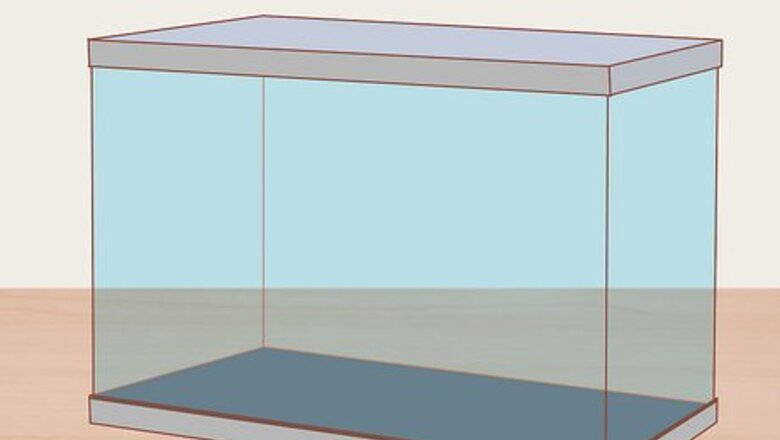
views
Maintaining Ideal Tank Conditions
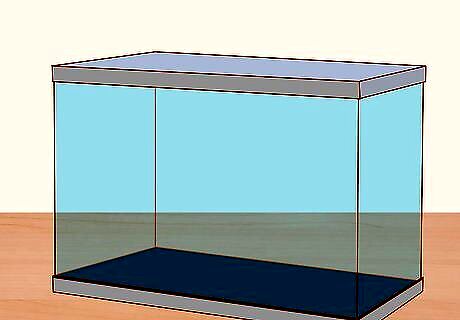
Buy a large aquarium. Neon tetras need at least an aquarium that will hold at least 10 gallons (38 L) of fresh water. This will provide enough space for hiding and swimming. Estimate about 10 gallons (38 L) for every 6 fish you want to keep. Too many in an unsuitably small tank and the ammonia and nitrate levels will get to high and could kill your fish.Any less your neon tetras might start getting stressed out depending on how small the group is. Stress is a big reason why fish die after being introduced to a persons tank.
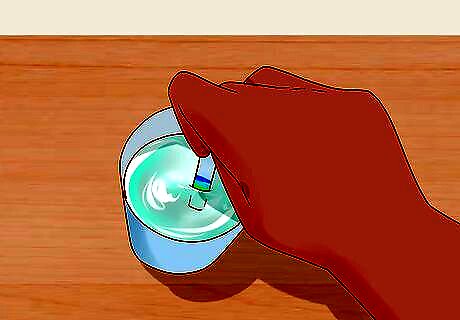
Cycle your tank without any fish. Do this a few weeks before bring your tetras home. This will clean the aquarium and remove any harmful bacteria that could kill your fish. Buy a water testing kit at the pet store. Make sure the water reads 0 parts per million (ppm) of ammonia (NH3), nitrite (NO2-), and nitrate (NO3-) before adding your fish. To cycle your tank, fill the tank with fresh water and run the filter. Add enough NH3 to raise its measurement to 2 ppm. Test the water daily and keep track of how long it takes for the NH3 to break down into NO2-. As NO2- levels rise, add more NH3 to bring them down. Eventually, the process will encourage the growth of NO3-forming bacteria. This will cause the NO2- level to fall. Continue to test the water until all three compounds fall to 0 ppm.
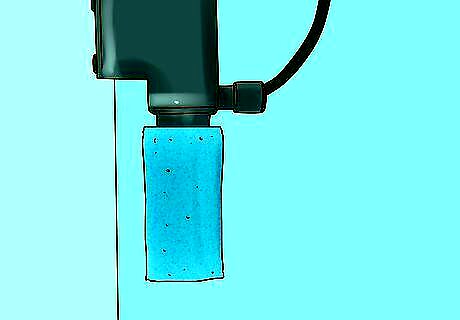
Cover the filter intake. Neon tetras are small, delicate fish whose bodies can get sucked into a filter with deadly results. Use mesh or foam to cover the intake. This will protect your fish while allowing the filter to regulate the bacteria in the water.
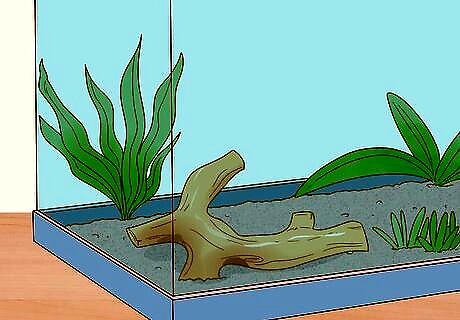
Add organic matter. In the wild, neon tetras are used to waters rich in plant life. Install aquatic or semi-aquatic plants from the pet store. Leaf litter and driftwood will also replicate tetras' natural habitats. Plants and driftwood also provide tetras with the hiding places they enjoy in the wild.
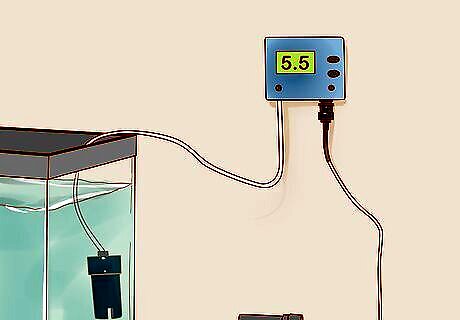
Monitor the pH. Tetras thrive in mildly acidic water, with a pH of about 5.5 to 6.8. Buy pH testing strips in your local pet supply store. Follow the instructions on the label to properly read the test results. Test the pH each time you change the water. If you want to breed your tetras, keep the pH slightly lower, between 5.0 and 6.0.
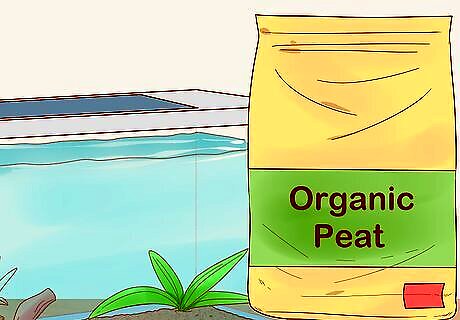
Make a peat bag to lower the pH if needed. Buy nylon pantyhose and a bag of organic peat (also known as sphagnum moss) from your local big box store. After washing your hands, stuff the peat into the foot of the panty hose. Tie off the hose after it's stuffed and cut off the foot. Lower the bag into the water and squeeze it to release some peat-filtered water. Then, drop it in the tank. Replace it every few months. Peat bags will also help to soften the water, which tetras require for survival. Peat may discolor the water slightly; however, this is not harmful, and regular partial water changes (which are required anyway) will make sure your water does not look like it came from a swamp.

Dim the lighting. In the wild, tetras live in dark waters. Keep the aquarium in a relatively dark corner of the house. Buy low-wattage bulbs in your pet supply store to create a dim effect. The plants and other hiding places will also help to shade the inside of the aquarium.
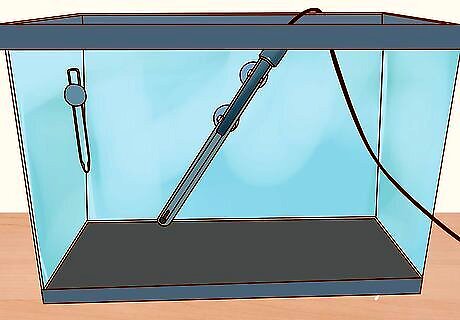
Control the temperature. Generally, your tank should stay around 70–80 °F (21–27 °C). Purchase an adjustable aquarium heater that you can find in most pet supply stores. To monitor the temperature, buy an aquarium thermometer. For breeding, maintain the temperature at about 75 °F (24 °C).
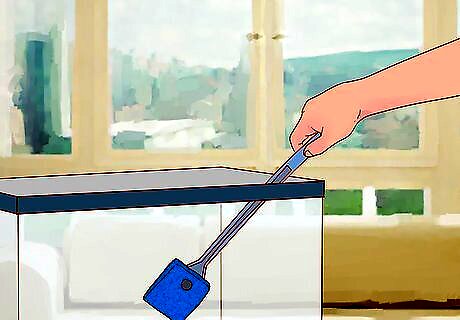
Clean the tank regularly. Neon tetras need clean water low in nitrates and phosphates to resist diseases. Replace 25-50 percent of the water in the tank at least every other week. Scrub out any algae growing on the tank, filter, or décor.
Keeping Your Tetras Healthy

Add tankmates. Neon tetras need to be in groups of six or more. Otherwise they'll get stressed and become ill. Avoid adding larger carnivorous fish whose diets might include tetras. Some acceptable tankmates include other tetras, algae-eating fish like otos and cories, and African dwarf frogs.

Quarantine new arrivals. You'll have to buy an additional tank, if you don't have one already. Keep them in the quarantine tank for at least two weeks. This will prevent contagious diseases like Neon Tetra Disease and Ich.
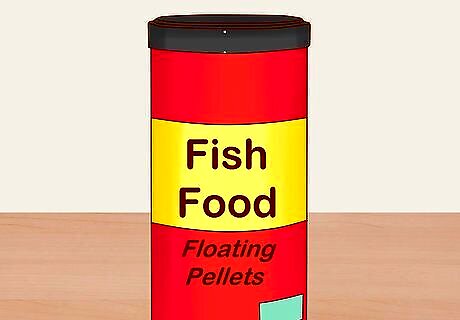
Feed your fish a varied diet 2-3 times daily. Neon tetras are omnivorous fish that live primarily on insects in the wild. Feed them wingless fruit flies and live or freeze-dried bloodworms. You should also supply them with algae (live or in wafer form), live or freeze-dried brine shrimp, and fish pellets. Collect these foods in the wild or buy them in a pet supply store. From time to time, tetras need frozen peas that have been thawed and shelled. This will aid in digestion. Neon tetras may be scared to come up and eat, or they may not notice their food. If they aren't eating, use a dropper to put the food near them.
Responding to Diseases
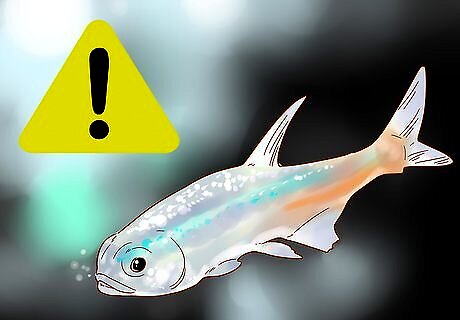
Quarantine fish with Neon Tetra Disease. This is the most common disease among neon tetras. The first sign is swimming away from tankmates. Affected tetras will also lose their neon stripe and develop spots or cysts on their dorsal fins. As soon as you recognize early symptoms, relocate the sick fish to a quarantine tank immediately. The disease is almost always incurable, but it never hurts to ask the vet for advice. It's normal for neon tetras to become dull in color at night. This is the result of special skin cells called chromatophores taking a rest. However, if the dullness continues during the day for several days in a row, the fish may be ill.

Treat Ich through environmental changes and medicine. Ich is a highly contagious parasite that takes the form of small white cilia-covered spots on the fish's body, which look like salt. To fight it, slowly raise the tank temperature to at least 86 °F (30 °C) for three days. This should kill the parasite. If the spots don't disappear after three days, put your fish in a quarantine tank and add cupramine (copper solution) to the water. Follow the instructions on the label. Keep the copper levels at 0.2 ppm. You can measure copper levels with a salifert test kit that you can buy in hobby stores. Kill the Ich in the original tank with aquarium salts, which you can buy in pet supply stores. Add one teaspoon (5 g) per gallon (4 L) of water every 12 hours for 36 hours. Let the salt remain in the tank for 7 to 10 days. If you have plastic plants, aquarium salts will melt them. For the sake of your tetras, toss the plants.

Research other diseases. Unhealthy neon tetras can also develop skin flukes, bacterial infections and diseases, and parasitic infections. Talk to your vet or read books that detail the symptoms and treatments of all diseases your fish might develop. In many cases, catching the early symptoms and taking immediate action can save your fish.













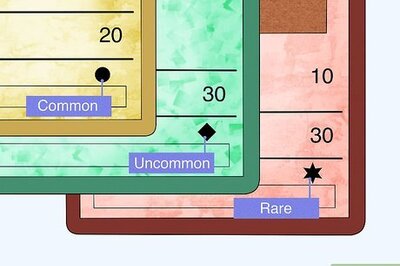



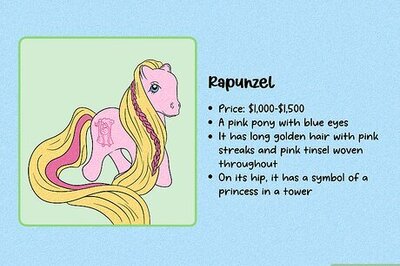


Comments
0 comment